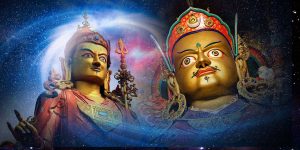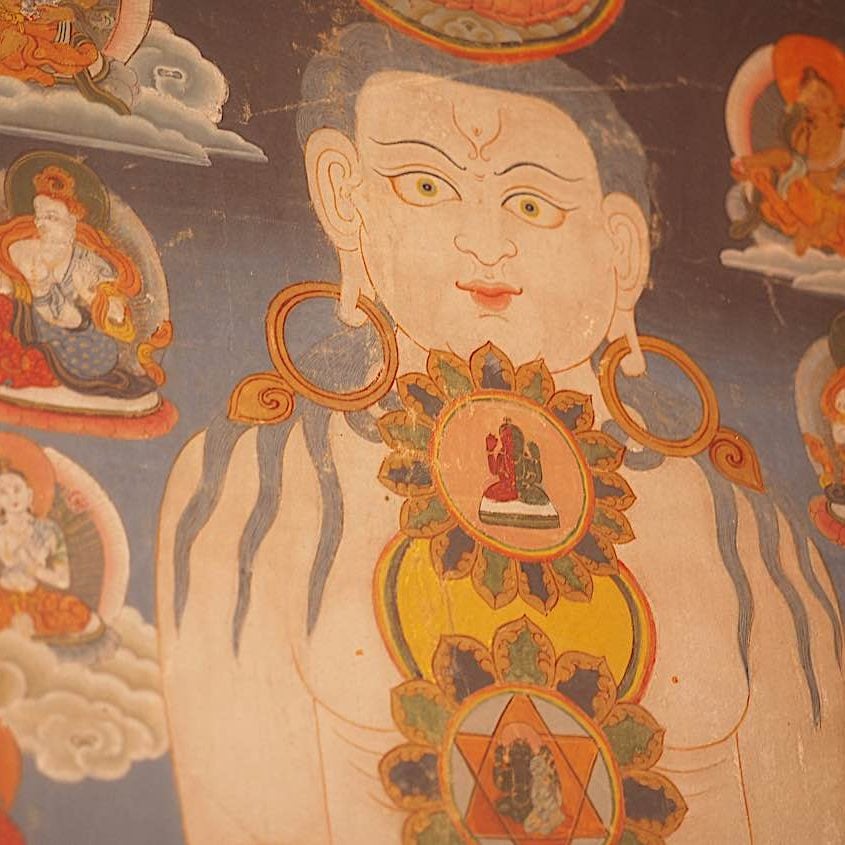Ganden Ngamchoe Paranirvana Day: Celebrating the Great Enlightened Sage from the Land of Snows Lama Tsongkhapa December 7
Tibetan Buddhists celebrate the life of the Great Sage Lama Tsongkhapa almost daily in regular practices — and especially on the anniversary of his Paranirvana called Ganden Ngamchoe Paranirvana Day. Whenever we practice the teachings of any lineage, we honor Lama Tsongkhapa — the embodiment of the compassion, wisdom, and activities of the Buddha. The Enlightened Sage of the Land of Snows, a personification of enlightenment and wisdom, brightened our existence and showed us the way towards spiritual awakening.

“The essence of all spiritual life is your attitude to others. Once you have pure and sincere motives, all the rest follows.” – Lama Tsongkhapa
On the Tibetan Calendar, Month 10, 25th Day, year 2150, is Ganden Ngamchoe Paranirvana Day, which this year corresponds to December 7, 2023, on the Western Calendar. This auspicious day is traditionally marked with light offerings, symbolizing the wisdom and compassion of Lama Tsongkhapa, piercing the darkness of ignorance and suffering.
By tradition, on Buddha and Paranirvana Days, the merit of your offerings and givings and charity and meritorious acts are multiplied by millions of times. According to Lama Zopa Rinpoche, based on the Vinaya text Treasure of Quotations and Logic, “karmic results are multiplied one hundred million times.”
Celebration Practices
There are countless ways to honor Lama Tsongkhapa, celebrate his contributions, and accumulate spiritual merits. Besides making light offerings, there are many meaningful practices one can take part in:
- Reciting Guru Yoga of Lama Tsongkhapa, “Migtsema” (a beautiful version, chanted by Yoko Dharma in this feature)
- Engage in virtuous deeds and acts of generosity, especially support of Dharma activities, support for the Sangha and help for those in need
- Practice the Three Principle Paths: Renunciation, Bodhichitta, and Wisdom understanding Shunyata
- Make offerings, not just light, but torma cakes, or Tsog offerings in keeping with your traditions.

Fulfill these activities with a genuine heart, a calm mind, and a spirit of reverence and love. Each deed done mindfully does not just honor Lama Tsongkhapa but also creates merit and helps us walk on the path of spiritual growth.
Lama Tsongkhapa’s Life Was a Teaching: The Example of Wisdom, Compassion and Activity
He was born in the year 1357 in the Amdo region of Tibet. The tale of Lama Tsongkhapa, also known as Je Tsongkhapa—loosely translated as the Enlightened Sage from the Onion Valley—unfolds as a compelling saga of dogged intellectual pursuit and profound spiritual evolution. Rising from modest beginnings as the child of unassuming parents, Tsongkhapa’s resilience and voracious quest for knowledge led him to establish the Gelug school of Tibetan Buddhism. His life story is an inspiring testament to his scholarly excellence, profound spiritual insight, and far-reaching influence on Tibetan Buddhism and the global spiritual landscape.
Celebrate the life of Lama Tsongkhapa with our short introduction and a short guided meditation:
At the tender age of seven, he began his religious studies, receiving ordination as a novice monk when he was only a child (Wikipedia). By the age of sixteen, he journeyed extensively in quest of knowledge, learning from many spiritual masters across Tibet, imbibing diverse religious doctrines, and comprehensively studying sutras, tantras, and commentaries.
His dearest achievements, however, were the founding of the Ganden Monastery in 1409 and the establishment of the Gelug school of Tibetan Buddhism, both of which carry profound spiritual significance even to the present day (Britannica). Tsongkhapa’s perceptive teachings and philosophical tenets baffled, enlightened, and guided multitudes, marking a pivotal turn in the development of Tibetan Buddhism.
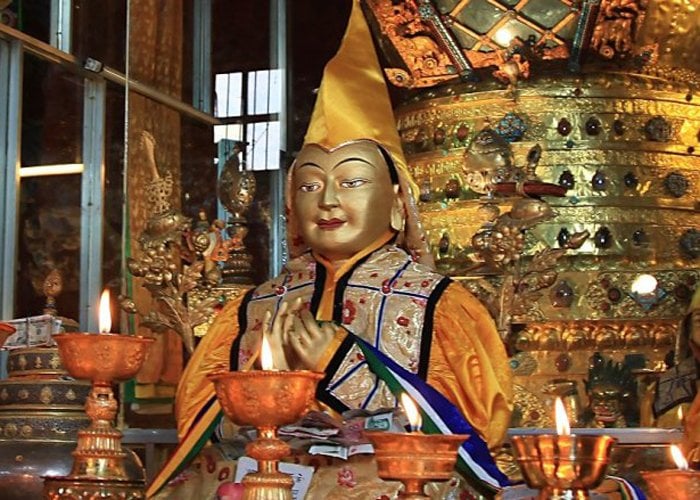
His magnum opus, the Lamrim Chenmo (The Great Treatise on the Stages of the Path to Enlightenment), serves as a pivotal guide to Mahayana Buddhism and stands as a testament to his scholarly erudition and spiritual enlightenment (Stanford Encyclopedia of Philosophy). Tsongkhapa’s life and teachings continue to inspire and provide the spiritual underpinning for students of Buddhism, embodying the perfect synthesis of knowledge, compassion, and action.
Lama Tsongkhapa exited this physical realm on the 25th of the tenth lunar month in the year 1419. His passing did not spell an end but marked the beginning of a rich legacy that scholars, believers, and seekers continue to draw wisdom, inspiration, and spiritual sustenance from (Himalayan Art). The grandeur celebrations on Ganden Ngamchoe Paranirvana Day stand as a testament to the enduring and widespread impact of his life and teachings.
Celebrate Lama Tsongkhapa’s teachings and life with his wonderous Migstema, here chanted beautifully by Yoko Dharma:
Celebrating Lama Tsongkhapa’s Wisdom: Quotes and Teachings
Ganden Ngamchoe Paranirvana Day: A Celebration of Enlightenment
At the heart of Ganden Ngamchoe Paranirvana Day lies a profound celebration of enlightenment. It is a day held in high reverence in Tibetan Buddhist traditions, mirroring the essence of Lama Tsongkhapa’s teachings as it radiates the wisdom of his enlightenment.
The Tibetan word ‘Ngamchoe’ refers to a sacred offering that echoes our innate desire to connect, give, and be in unity. It brings forth the feeling of sharing what we cherish most with the universe, creating a sense of interconnectedness and shared compassion. Similarly, ‘Paranirvana’ signifies the culmination of spiritual awakening, the attainment of the other shore beyond life’s sufferings. Thus, Ganden Ngamchoe Paranirvana day stands as a beacon of illumination, guiding seekers on their spiritual journey.
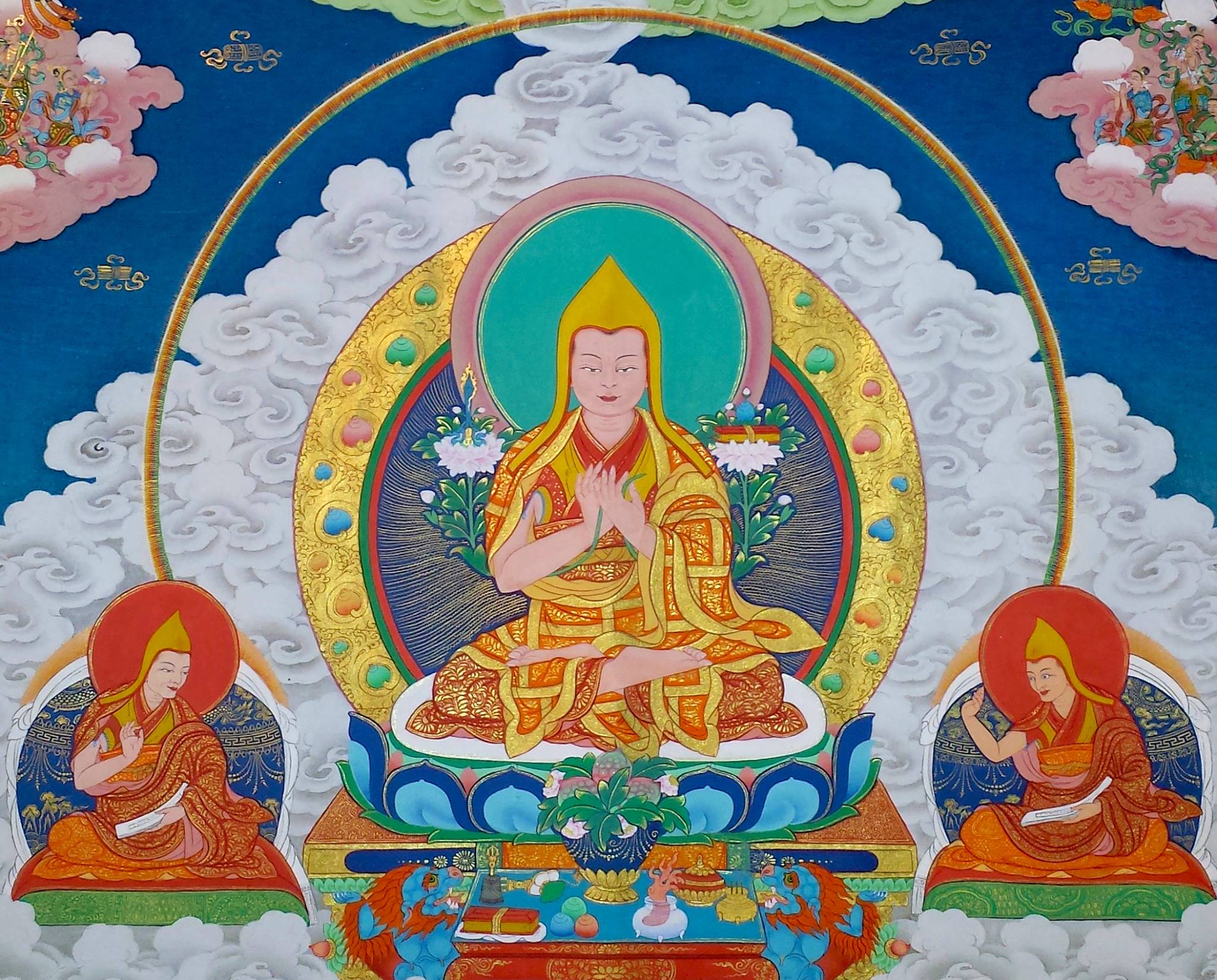
Imagine, for a moment, the substantial symbolism contained within this day. The day itself is the embodiment of the very heuristics Lama Tsongkhapa offered – a day of complete illumination that dazzles with an enlightened aura. Isn’t it as if we are being shown, once again, that the path to enlightenment is not merely an abstract concept, but a living, vibrantly attainable state of being?
“In all my deeds may I probe into my mind, and as soon as mental and emotional afflictions arise — as they endanger myself and others — may I strongly confront them and avert them. ” – Lama Tsongkhapa
Taking the example of Lama Tsongkhapa’s life, marked by wisdom, compassion and relentless pursuit of truth, we are encouraged to cultivate these values in our own lives. The festivities of this day act as a nurturing ground for these positive attributes, encouraging individuals to delve deep into self-reflection and evoke the spirit of generosity.
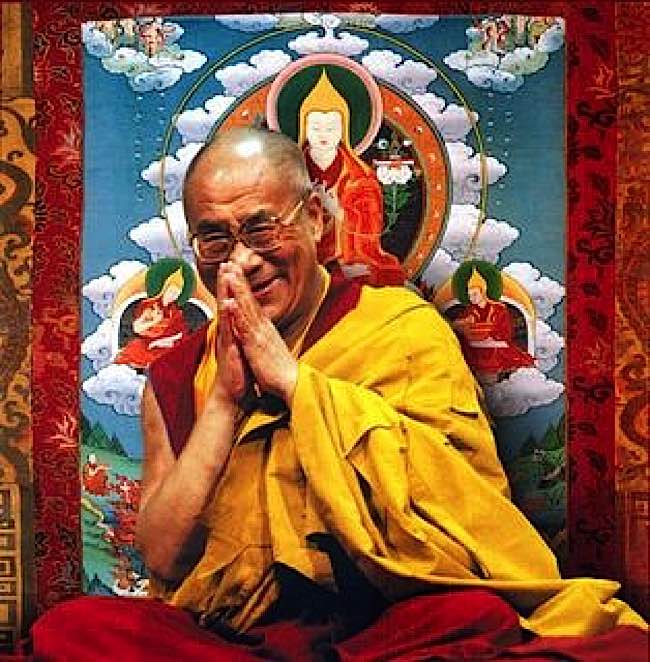
But, what does it mean to truly celebrate enlightenment? Is it merely a day of remembrance, or does it hold within its core an invitation to each one of us to walk the path to enlightenment, just as Lama Tsongkhapa did? On Ganden Ngamchoe Paranirvana Day, this question becomes the heart of our collective striving, guiding our thoughts, words, and actions.
Commemorating the Ganden Ngamchoe Paranirvana Day becomes a journey rather than a destination. A journey filled with contemplation on Lama Tsongkhapa’s teachings, mindfulness, compassion and unity. In essence, it is, then, the embodiment of living enlightenment.
Lama Tsongkhapa is an emanation of all three of the Great Bodhisattvas, embodying, wisdom, compassion and power. Another way to celebrate his special day is to chant the mantraas of the Three Great Bodhisattvas:
Ganden Ngamchoe Paranirvana Day: A Time for Reflection and Renewal
Ganden Ngamchoe Paranirvana Day, a pivotal day in the Tibetan calendar, provides a rich opportunity to not only celebrate the life and teachings of Lama Tsongkhapa but also to introspect, reflect, and identify areas of spiritual growth. It serves as an invocation of the inner spirit, a gentle reminder that enlightenment, as attained by Lama Tsongkhapa, is within our reach.
‘Reflection’ here is more than a simple backward gaze. It seeks to facilitate a deep understanding of Lama Tsongkhapa’s teachings. “What do his teachings mean to me? How have I implemented his teachings in my daily life? How can I better integrate them into my spiritual journey?” These reflective questions demand introspection and self-assessment, nudging us toward spiritual renewal.
Parallely, ‘renewal’ embodies the hope and promise of a fresh start. It is an invitation to shed our spiritual complacency and reaffirm our commitment to the path of enlightenment. Every year, Ganden Ngamchoe offers practitioners a chance to renew their vows and intensify their practices, while rekindling the spark of spirituality within.
“Just as a snake sheds its skin, we must shed our past over and over again.” – Gautama Buddha

Further, to actualize this introspection and renewal, many practices are undertaken on this day. Some immerse themselves in meditation, some engage in study, while others participate in acts of charity. Besides, a special emphasis is placed on making light offerings, aligning with the practice Lama Tsongkhapa himself undertook in his quest for enlightenment.
However, it’s essential to remember that while these activities are significant, they are but tools to aid in the fundamental goal—transformation of the mind. Liberating oneself from the cycles of desire, anger, and ignorance, the very heart of Lama Tsongkhapa’s teachings, should be the ultimate aim of reflection and renewal.
Therefore, Ganden Ngamchoe Paranirvana Day should be viewed as an opportunity, almost a sacred day of rebirth. It’s a chance to deepen our understanding of Lama Tsongkhapa’s teachings, reshape our mental narratives, and walk a step closer towards the enlightened state Lama Tsongkhapa himself achieved.

Light Offerings: Illuminating the Path to Enlightenment
Light is a powerful symbol across many cultures—an emblem of wisdom and truth that illuminates the darkness of ignorance and misunderstanding. In Tibetan Buddhism, and specifically in the teachings of Lama Tsongkhapa, light offerings have a deeper significance. They are seen as a means to dispel the metaphorical darkness obscuring our intrinsic Buddha-nature, and to kindle the inner light of wisdom and compassion. As we celebrate Ganden Ngamchoe Paranirvana Day, let us delve into the profound practice of making light offerings.
A fundamental teaching of Lama Tsongkhapa is that we each have the potential to awaken our inner Buddha-nature—the source of ultimate wisdom and compassion within us. Imagine, if you will, a room shrouded in darkness—a space where objects are not discernible, stumbling and misstep is common, and understanding is cloaked. Offering light is akin to flipping the switch, illuminating the room and suddenly making visible what was previously hidden.
“Just as light dispels darkness, offering light to enlightened beings symbolically and actively dispels the darkness of ignorance from our minds. We don’t offer light to Buddhas because they need it, but because of what light symbolizes.” – Lama Tsongkhapa
On Ganden Ngamchoe Paranirvana Day, followers of Lama Tsongkhapa traditionally make light offerings—candles, lamps, or even the radiance of the sun as proxy lights. This singular act is not just an external ritual. Consider it a powerful means of introspection and transformation—an uplifting practice that mirrors the path to enlightenment, casting off the metaphorical darkness of ignorance, fostering a clearer understanding of reality, and nurturing the seeds of bodhicitta, the altruistic determination to achieve enlightenment for the benefit of all sentient beings. The act of offering light celebrates and connects with Lama Tsongkhapa’s wisdom, illuminating a path for us to follow.

The process of making a light offering is as simple as kindling a flame, yet its repercussions are profound. As the light shines, visualize that it penetrates and disperses the darkness of ignorance in your mind, revealing the luminous nature of reality. It serves as a visual and symbolic reminder of Lama Tsongkhapa’s teachings—a divine encouragement to cultivate wisdom and compassion, and to illuminate your path to enlightenment.
The journey to enlightenment is personal but that doesn’t mean it’s to be tread alone. Encourage those around you to join in this profound practice. It’s an opportunity to not just celebrate Lama Tsongkhapa, but to actively step into his teachings, reminding ourselves of the wisdom that resides within, waiting to be awakened.
Creating Merit: Practices to Honor Lama Tsongkhapa
Creating merit on Ganden Ngamchoe Paranirvana Day is a heartfelt and impactful way to honor the life and teachings of Lama Tsongkhapa. But, how does one go about understanding and activating this practice? Simply put, creating merit, or virtue, is to perform acts of goodness, fostering karmic seeds that lead to happiness, prosperity, and well-being. It is an integral part of the path to Enlightenment, something Lama Tsongkhapa tirelessly emphasized throughout his teachings.
Making Offerings
One of the most profound ways to create merit is through making offerings. Be it a simple drop of water, beautiful flowers, incenses, or well-prepared meals, each offer is a gesture of devotion that signifies a pure intent, a movement away from attachment and toward gratitude and generosity. Remember, it is not the value of the offering that matters; it is the sincerity and purity of the intention behind it.
Engaging in Positive Actions
Engaging in actions that benefit others is another wonderful practice that not only generates vast amounts of merit but also aligns us perfectly with Lama Tsongkhapa’s ethos of compassion and altruism. Consider performing acts of kindness, volunteering your time or resources, or simply being mindful of your actions and words, promoting harmony rather than discord around you.
Embracing the Art of Forgiveness
Practicing forgiveness can be a powerful way to create significant merit. By forgiving others, we directly incinerate the seeds of anger and resentment that can grow within us, leading to inner peace and harmony. forgiveness is not only about others but also forgiving ourselves for past mistakes, allowing for personal growth and betterment.
Meditating on Lama Tsongkhapa’s Teachings
Meditating on Lama Tsongkhapa’s teachings is a profound way to generate merit. This meditation is not merely a mental exercise but a transformative practice that allows his wisdom and compassion to permeate our very being, cultivating profound positive changes within us.
In conclusion, creating merit is about doing good, acting with gentle kindness, forgiveness, and imbuing daily life with Lama Tsongkhapa’s teachings. Choosing the path of merit involves cultivating good deeds, good words, and good thoughts. This Ganden Ngamchoe Paranirvana Day, let us all embrace these practices, honoring Lama Tsongkhapa’s enlightened insight and igniting the flame of merit within each one of us, illuminating our path towards enlightenment.
More articles by this author

Guru Rinpoche is ready to answer and grant wishes: “Repeat this prayer continuously” for the granting of wishes
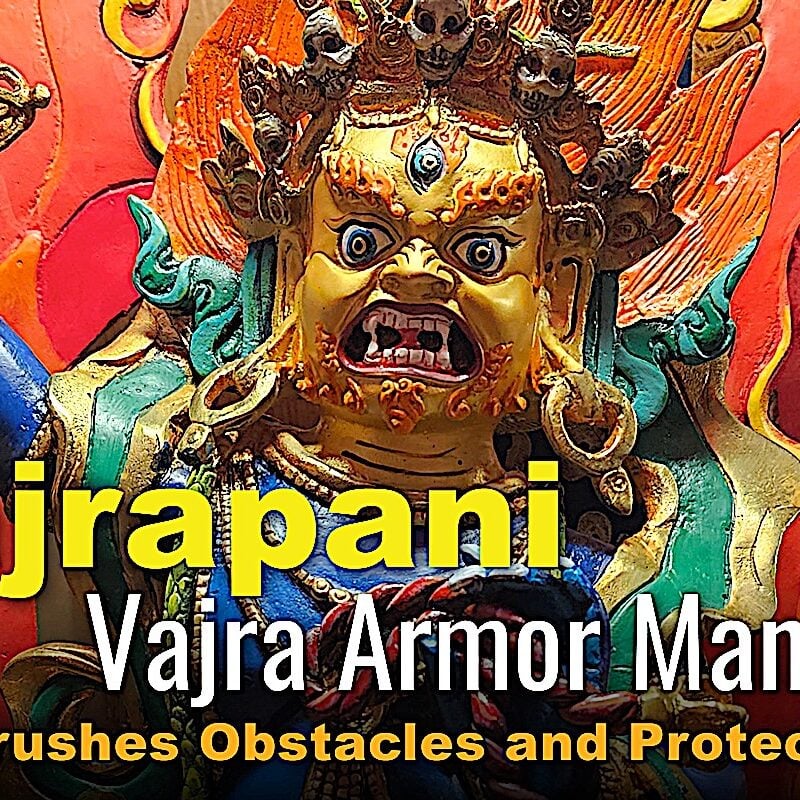
VIDEO: Vajrapani Vajra Armor Mantra: Supreme Protection of Dorje Godrab Vajrakavaca from Padmasambhava
Search
Latest Features
Please support the "Spread the Dharma" mission as one of our heroic Dharma Supporting Members, or with a one-time donation.
Please Help Support the “Spread the Dharma” Mission!

Be a part of the noble mission as a supporting member or a patron, or a volunteer contributor of content.
The power of Dharma to help sentient beings, in part, lies in ensuring access to Buddha’s precious Dharma — the mission of Buddha Weekly. We can’t do it without you!
A non-profit association since 2007, Buddha Weekly published many feature articles, videos, and, podcasts. Please consider supporting the mission to preserve and “Spread the Dharma." Your support as either a patron or a supporting member helps defray the high costs of producing quality Dharma content. Thank you! Learn more here, or become one of our super karma heroes on Patreon.
Lee Kane
Author | Buddha Weekly
Lee Kane is the editor of Buddha Weekly, since 2007. His main focuses as a writer are mindfulness techniques, meditation, Dharma and Sutra commentaries, Buddhist practices, international perspectives and traditions, Vajrayana, Mahayana, Zen. He also covers various events.
Lee also contributes as a writer to various other online magazines and blogs.






